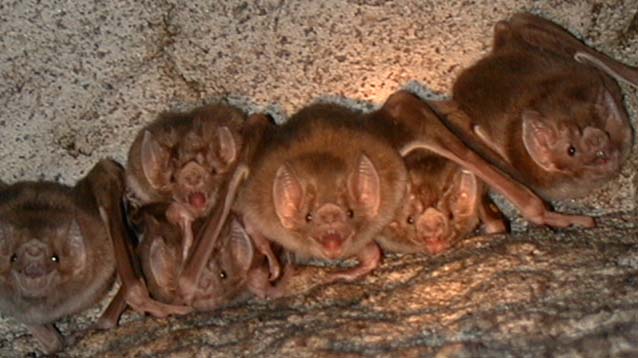Lack of Taste Aversion in
Vampire Bats
Biology 342 Fall 06
Will McNitt and Amanda Trail
Potential Research:
Another Viewpoint: Taste Aversion as a Product of Roost-Interactions
There is also the possibility that taste aversion in generalist bats in comparison to vampire bats comes about through continuous learned associations with other bats. While vampire bats form roost sites with other vampire bats, food associations between vampire bats are usually between mothers and their offspring (Wilkinson, 1984) wheras fruitivirous bats are believed to glean information about food from any potential roost mate by smell (Ratcliffe et. al., 2005). This brings up the question of whether taste aversion can or cannot be learned through direct mother-offspring interactions or continual processes of indrect roost interactions. Indirect roost interactions between fruitivirous bats who have eaten unripe, toxic fruits may act as the stimulus by which other bats will learn to be adverse to unripe and toxic fruits. In vampire bats, however, mother's usually directly feed or lead their offspring to blood, which may suggest that vampire bat offspring do not have the opportunity to learn or distinguish between different blood sources.
A roost of vampire bats.
Photo found at http://www.conservationcentre.org/images/vamclose.jpg